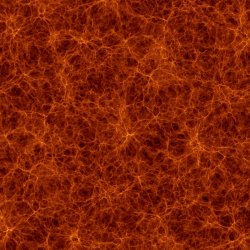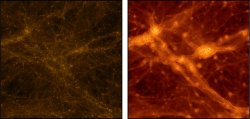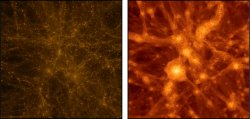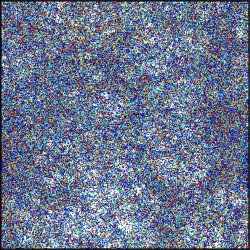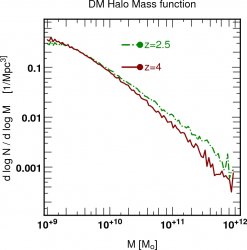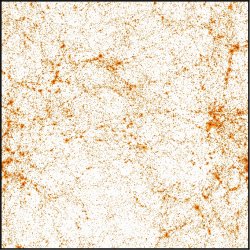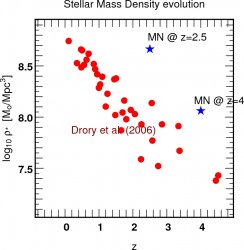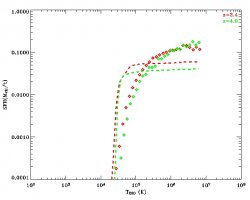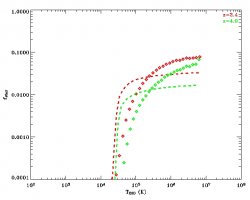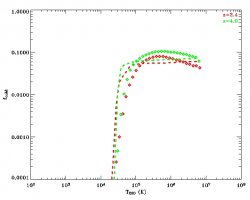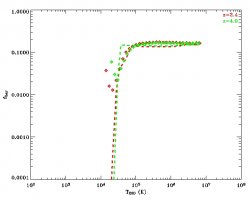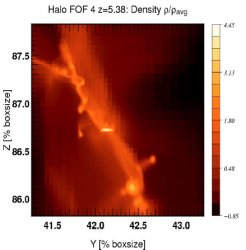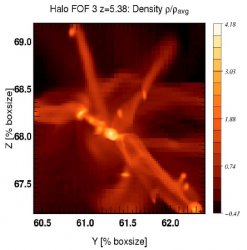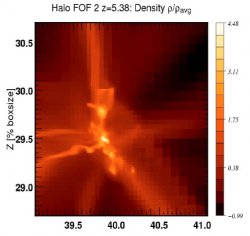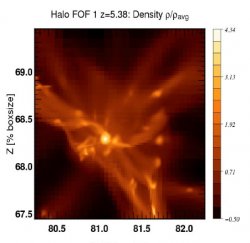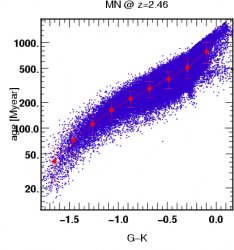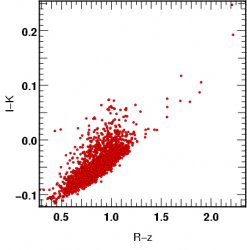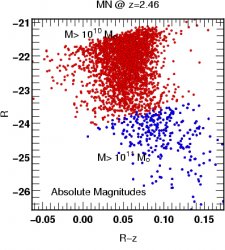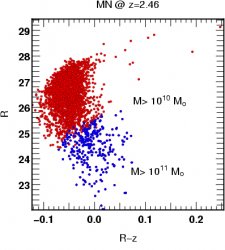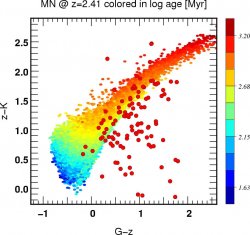
The site's hierarchy
Navigation
| M | T | W | T | F | S | S |
|---|---|---|---|---|---|---|
| 23 | 24 | 25 | 26 | 27 | 28 | 1 |
| 2 | 3 | 4 | 5 | 6 | 7 | 8 |
| 9 | 10 | 11 | 12 | 13 | 14 | 15 |
| 16 | 17 | 18 | 19 | 20 | 21 | 22 |
| 23 | 24 | 25 | 26 | 27 | 28 | 29 |
| 30 | 31 | 1 | 2 | 3 | 4 | 5 |
- Les premiers zoom de galaxies sont accessibles
- Le halo FOF 6133 de la boite Horizon L et le halo FOF 544 de Horizon S ont été resimulés avec plusieurs techniques de zoom. Il est important que chaque "zoomer" valide sa méthode, avant de lancer une campagne de zoom sur un plus grand cataloque.
- Les données de la simulation Mare Nostrum sont disponibles
- 34 snapshots jusqu’à z=4 sont accessibles sur horizon3 et sur le serveur de fichiers de l’IDRIS à la collaboration Horizon.
- Méso Machine HPC1 opérationnelle
- Depuis le 23 Octobre 2005, la Méso machine du site horizon est operationnelle. Elle correspond à 3 quadriprocesseurs avec chacun 64 Giga de RAM reliés par infiniband, ainsi qu’un access conséquent (sur une base de projet dédié) au reste de la ferme). Son acces est ouvert a toute personne de la collaboration ayant acces à la minigrille et qui en fait la demande a admin-minigrille
- http://
- Workshop Horizon le 14 et 15 novembre 2005
- Il aura lieu à Paris les 14 et 15 novembre 2005 (prévoir une nuit sur place). L’enregistrement est ouvert dans la rubrique "meeting!"
- http://
Mare Nostrum  z=2.5
z=2.5
![]() QSOS
QSOS
![]() Mass function
Mass function
![]() VVDS ?
VVDS ?
see also the discussionfor z=4
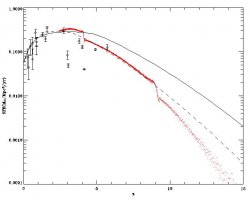
A couple of movies of the unfolded density and temperature are available here and here
a nice travelling in the cube is shown here and in stereo here
Fof catalog
stars
Halos baryonic properties
Average properties as a function of T200 (to be compared with Rasera&Teyssier 2006 - same scale and units): symbols are MN results and lines are analytical model predictions.
Seeing the 3 precedent graphs, it seems that large halos form stars more efficiently than smaller ones. I don’t know why for the moment. Does anybody have an idea? Yann.
Note that the baryon fraction is really close to the universal one and the minimal halo mass for baryons to collapse in dark matter potential well is well predicted by the model.
A couple of movies of the unfolded density and temperature are available here and here
a nice travelling in the cube is shown here and in stereo here
Fof catalog
stars
Movies halo13
Done with VisIt llnl
Done with amr2mpeg.f90 and part2mpeg.f90 (by Yann&Romain): size 1Mpc/h com
FOF ID
Galaxy ID
Galaxy Colours
Accretion on a massive halo down to z=2
Color coding: red: density, green: metallicity, blue: temperature
